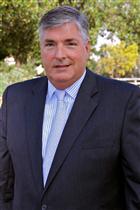
Greetings—
A lively exchange
At our Arts and Culture Community Conversation this week, we had a lively discussion about some vexing questions. How do arts organizations find and engage new audiences? How can organizations adapt their programming to accommodate changes in the way we experience and create art? How do we navigate the generational and cultural divides?
The viability of our local arts organizations may rest on the answers.
The conversation included a panel of artists and arts organization leaders-several of whom were our grantees. Their focus was on experiential projects in less traditional venues, more participation and a spirit of collaboration. Each spoke with pride and authenticity about creating art locally, and its importance to our sense of community.
Technology plays an increasing role
Technology- as a medium, access point and communication tool – has become a vital element for artists and arts organizations. Alas, technology can be both a servant and a master.
Providing access to local and international talents, venues and experiences, it opens doors far beyond the region, the neighborhood and the community where we live. Technology offers the opportunity to join communities of common interest and to create relationships beyond the immediate experience; it can literally transform the arts experience.
On the other side it can play a disruptive role, separating artists from just compensation for their work. It can also create distance between the consumer and the creator; enabling millions of the former but perhaps fewer of the latter.
The digital divide
The magic from digital connectedness is still not universal. Many rural communities and families struggling at the edge of poverty do not have access to smart phones, Wi-Fi or the internet. Some rely on public schools or libraries to provide access, which is increasingly vital for students developing digital competencies in an array of disciplines. Digital literacy and access are real issues in our valley.
Competing with the entertainment economy
The panel also discussed the new levels of competition for the entertainment dollar, and the ease of access that this digital world provides. Traditional art forms must compete with the wider entertainment economy. Many of the more established institutions, especially those who do live events, feel tremendous pressure that every performance be ‘worth it’. The tension between maintaining quality, expanding innovative ideas and sustaining operations is a huge challenge, and often requires significant fundraising.
Food, education and creating art makes art real
Some key themes emerged from the audience and panel discussions:
• Food draws individuals and families, particularly if the art is unfamiliar or in a nontraditional venue. Good restaurants also draw patrons, an ever present challenge for urban downtowns.
•Connecting to the experience of creating art engages people at a whole new level. One panelist noted how few parents would participate with their (older) children in creating art in public places, perhaps in part because their own skills were still developing.
• Educating parents and children about the arts – in all their forms – remains crucial in helping attendees understand what they are hearing, seeing or exploring.
• We are a diverse community - many grow up with a fine ear tuned to their family traditions but interact less with other cultures. Interestingly, these barriers break down when the similarities in message or even in instruments are explored. Several noted the power of listening to music or watching different cultural traditions that speak to both the particular and the universal.
• Funding for artists, and for spaces to create art, is an anchor to a healthy arts ecosystem. Far too often the artists who create energy and community become displaced upon the arrival of gentrification and new investment; something vital is lost in that transition.
Arts fosters relationships
The panelists spoke of the powerful connections that the arts provide, especially between artists and their public/consumers. Each spoke eloquently about art creating relationships, which can then be deepened by artist and organizations. The use of public art to talk about ideas, reflect the interconnections of community and engage a wide variety of talents was noted as another public good.
The power to shape a region’s identity
At CVCF, we understand and value the arts. Expanding the capacity of our region’s arts infrastructure, extending donor legacies and investing agency endowments are priorities of our work in the arts. Our Center for Community is both a collaboration hub and soon to be an arts exhibit venue.
We know that the arts are a vital and prominent sector that can shape the identity of our region. New audiences, and new partners in the creative spaces, not only expand relationships but opens new horizons as well.
We look forward to exploring how the arts shape the identity of our region, and how we – as a partner, funder, advocate and colleague – can help our arts, and the organizations vital to their life, expand its audiences, and thrive in the days ahead. Come join us.

Comments